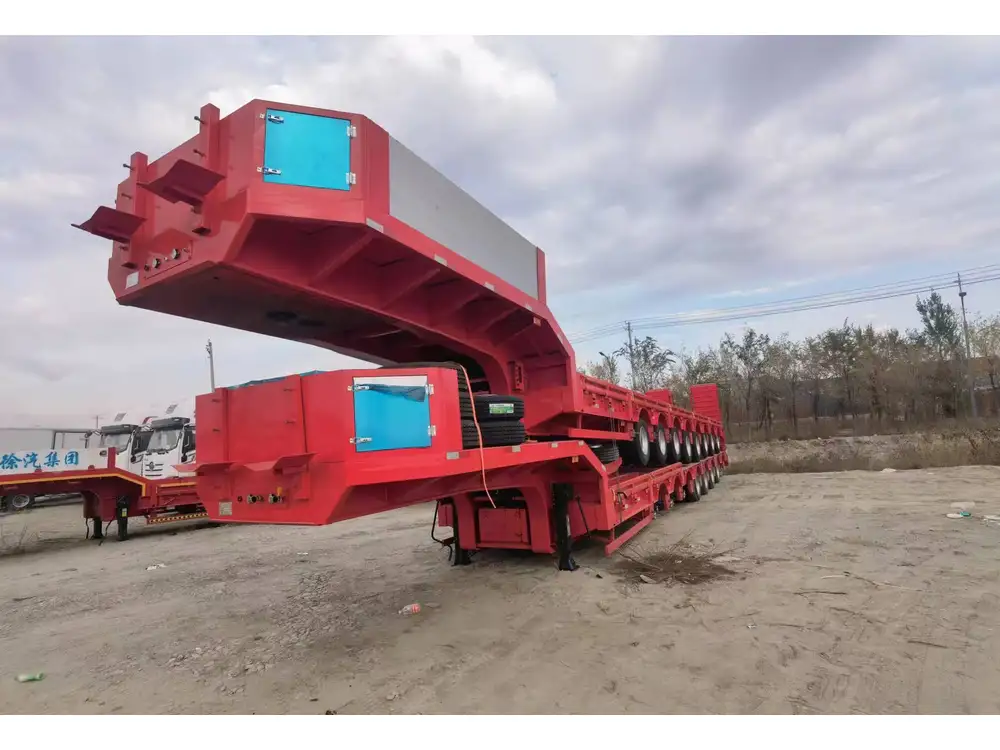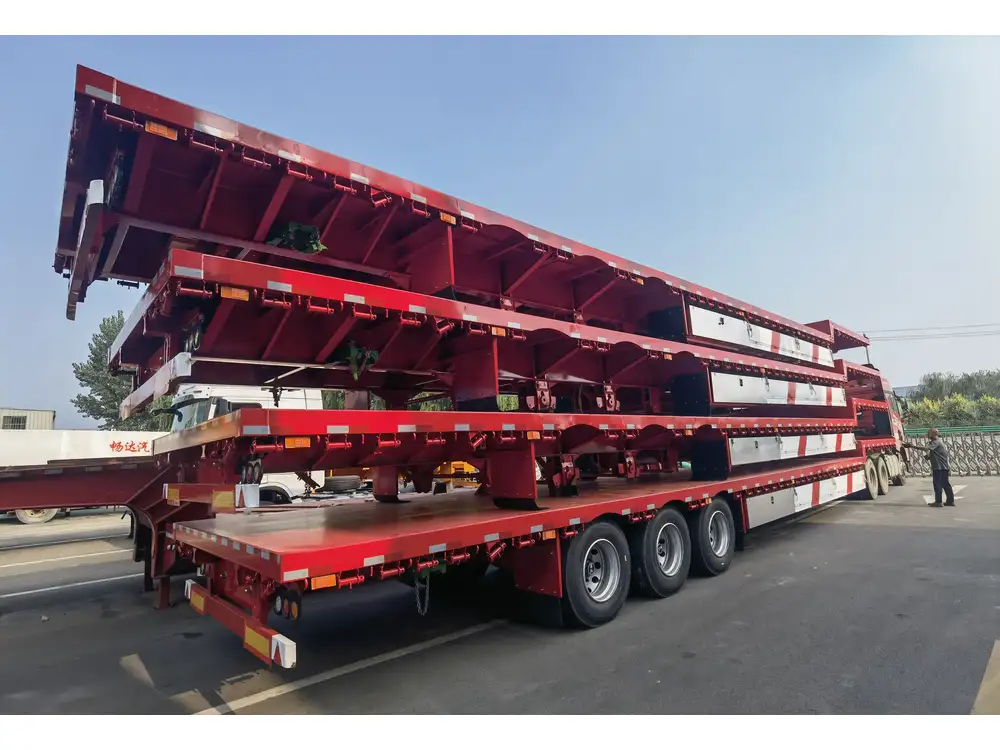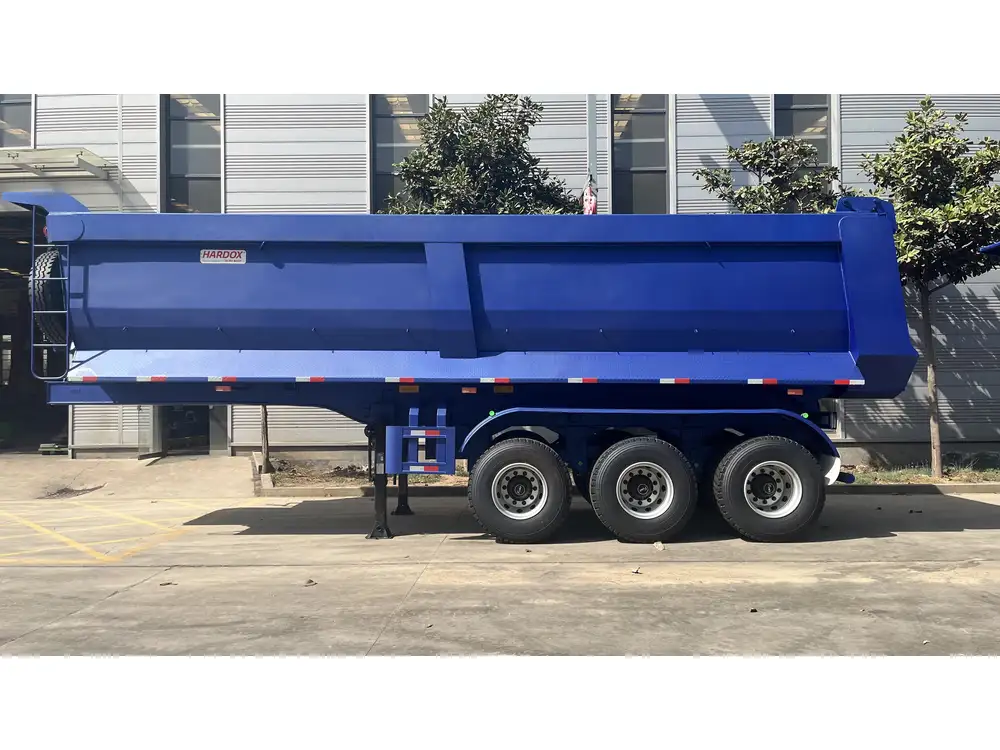Parking a tank trailer is a meticulous process that demands the highest level of awareness, attention to detail, and adherence to safety practices. Tank trailers, designed to transport liquids and sensitive materials, require precise handling to mitigate the risk of spills, accidents, and damage to both the trailer and the surrounding environment. In this article, we will delve into the critical factors to consider when parking a tank trailer, providing an extensive guide designed to enhance safety and operational efficiency.
Understanding the Characteristics of Tank Trailers
Types of Tank Trailers
Tank trailers come in various forms, each suited for different types of cargo. Understanding the specific type of tank trailer you are dealing with is essential when planning parking procedures. The most common types include:
| Type | Description |
|---|---|
| Chemical Tankers | Designed for transporting hazardous chemicals |
| Food-Grade Tankers | Used for liquids intended for human consumption |
| Liquid Bulk Tankers | Carry liquids in bulk, such as fuels or oils |
| Cement Tankers | Specially designed for transporting powdered cement |
Each of these trailers presents unique challenges and requirements when parking and securing them.
Key Factors to Consider When Parking a Tank Trailer

1. Location Selection
Choosing the right location is paramount in preventing accidents and ensuring safe operations. Factors to consider include:
- Surface Stability: Ensure that the ground is level and stable to prevent rolling.
- Proximity to Hazards: Avoid parking near busy roads, flammable materials, or water bodies.
- Space Availability: Assess the area for sufficient space to maneuver the trailer without obstructions.
2. Pre-Parking Checks
Before parking a tank trailer, it’s essential to perform thorough checks:
- Tire Condition: Inspect tires for proper inflation and any visible damage.
- Braking System: Ensure that the brakes are in good working order.
- Cargo Load: Verify that the cargo is evenly distributed to enhance stability.
3. Maneuvering the Trailer
Parking a tank trailer requires precision:
- Approach Angle: Align your vehicle at a suitable angle for easier backing in.
- Use of Mirrors: Regularly check mirrors to monitor surroundings during maneuvers.
- Slow Movements: Execute slow and deliberate movements to maintain control.

Detailed Parking Procedure for Tank Trailers
Step-by-Step Guide to Safely Parking
Arrival and Positioning
- When you arrive at your designated parking area, assess the surroundings carefully.
- Position the tractor unit appropriately, ensuring you have enough room to reverse the trailer without hitting surrounding objects.
Engaging the Brakes
- Before exiting the vehicle, engage the parking brake.
- Use wheel chocks for added security, particularly on inclines.
Executing the Back-In
- Slowly reverse the trailer while turning your steering wheel to guide the rear into the desired position.
- Monitor the trailer’s entry into the parking space, ensuring it does not touch any obstacles.
Finalizing the Parking
- Once the trailer is in position, straighten the tractor by turning the steering wheel in the opposite direction.
- Complete the parking by shifting the gear to ‘Park’ and shutting off the engine.
Considerations for Unloading Operations
Once parked, unloading operations commence, which necessitate additional precautions:
- Assessing Surroundings: Before unloading, check for potential hazards in the immediate area.
- Communication: Maintain clear communication among team members to ensure safety.
- Spill Contingencies: Be prepared with spill kits and emergency procedures in case of an accident.

Safety Measures and Best Practices
1. Emergency Preparedness
Ensure that every driver is familiar with emergency protocols, including:
- Spill Response Training: Understand procedures for containing and cleaning up spills.
- Equipment Ready for Emergencies: Keep fire extinguishers and first-aid kits accessible.
2. Regular Training Programs
Investing in regular training helps reinforce best practices:
- Defensive Driving Courses: Train drivers on safe maneuvering techniques specific to tank trailers.
- Hazardous Material Handling: Ensure all personnel are familiar with the materials being transported.

3. Routine Maintenance Checks
Adopt a strict maintenance schedule:
- Weekly Inspections: Conduct inspections of tires, brakes, and lights.
- Documenting Maintenance: Keep meticulous records of maintenance and repairs.
Common Mistakes to Avoid When Parking a Tank Trailer
A successful parking job requires vigilance and awareness of these pitfalls:
1. Ignoring Weather Conditions
Weather plays a significant role in parking safety:
- Wet or Icy Conditions: Reduced traction can make parking much more difficult. Take additional precautions by allowing for longer stopping distances.

2. Neglecting to Use Safety Equipment
Always utilize necessary equipment:
- Failing to Engage the Parking Brake: Not using the brake significantly increases the risk of the trailer rolling.
- Omitting Chocks: Especially on inclines, failing to use wheel chocks can lead to disaster.
3. Speeding During Maneuvers
Many accidents occur due to excessive speed:
- Slowing Down: Maneuvering at a controlled speed provides better control and reaction time.
The Impact of Technology in Tank Trailer Parking
Modern technology offers solutions to enhance safety and efficiency in trailer parking:

Telematics and Fleet Management Systems
Implementing telematics helps in monitoring a trailer’s position, condition, and even driver performance in real-time. Such systems can:
- Provide Real-Time Feedback: Allowing for immediate corrections and training opportunities.
- Track Maintenance: Ensuring that all critical components are regularly serviced.
Backup Cameras and Sensors
Incorporating backup cameras and parking sensors significantly reduces blind spots and improves safety when maneuvering:
- Wider Visibility: Essential for assessing the surrounding area during parking.
- Enhanced Precision: Assist drivers in making micro-adjustments during the parking process.
Conclusion
Parking a tank trailer requires an intricate understanding of various factors, from selecting an appropriate location to maneuvering the vehicle to ensure maximum safety. The complexity of the task is compounded by the nature of the cargo, which can vastly differ from one trailer to another. By adhering to safety protocols, leveraging technology, and continually training personnel, we can ensure safer and more effective operations.
When parking a tank trailer, remember that attention to detail is critical; every step—whether it involves checking the equipment, communicating with team members, or addressing potential hazards—can drastically affect outcomes. By implementing the strategies outlined in this guide, both operators and industries can enhance safety measures, prevent accidents, and maintain compliance with regulatory standards.



